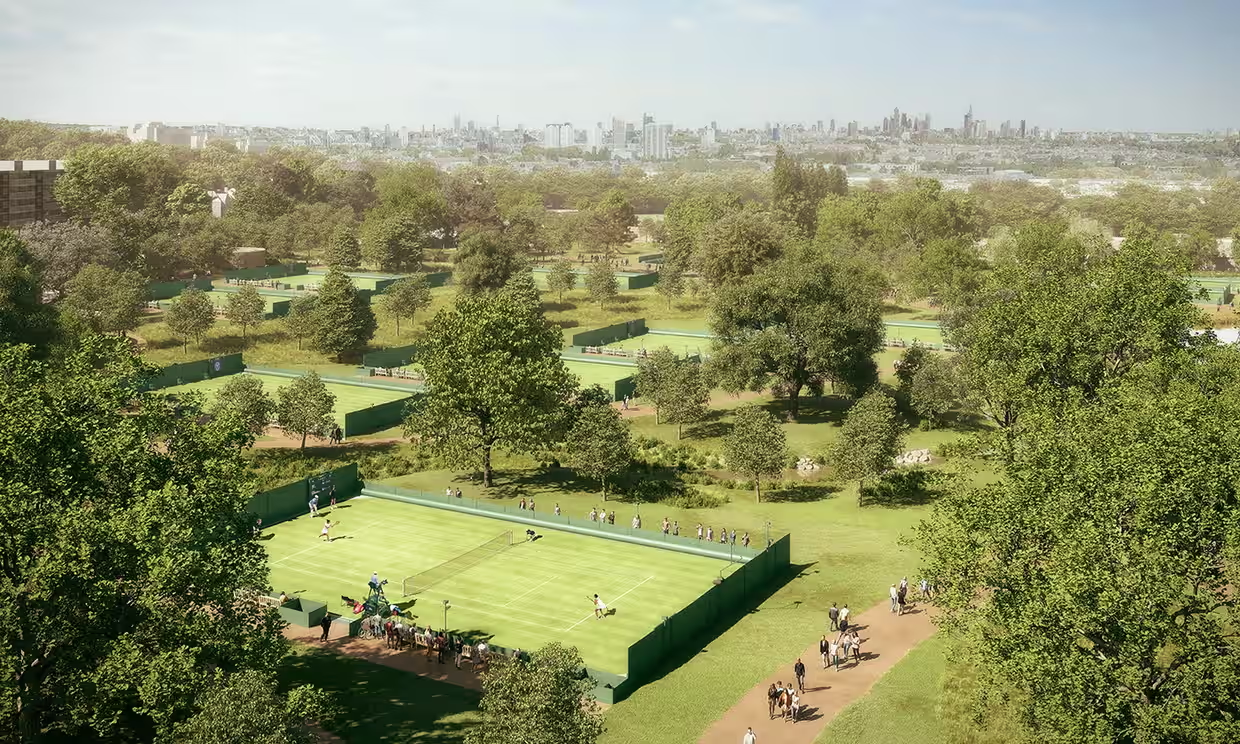Eeshna Dashottar, Pune
The plan for expansion of the Wimbledon tournament site has been given official approvals by the Greater London Authority on 27 September 2024. This proposal for expansion was put forward by the organisers of Wimbledon, the All England Lawn Tenis Club (AELTC).
It has been reported that as per the proposal, a total of 39 new tennis courts will be added for expansion. This project will happen in Wimbledon Park which is located close to the All England Club. An expansive court with an 8,000-seat capacity and a retractable roof will be constructed as a part of this proposal. The organisers sought permission to extend the site from 41 to 115 hectares on the Wimbledon Park golf course. It is believed that this step will lead to ease of conduction of the Wimbledon Tournament as the qualifying tournament will be held on-site instead of being held at Roehampton Community Sports Centre which is three miles away from the site of Grand Slam.
However, locals from the region have been raising their voices regarding this expansion proposal. The reason for their disagreement is based on the environmental harm that this project may cause to the area. A three-hour-long public hearing was scheduled at City Hall to discuss the issues raised by the locals on the proposal.
Jules Pipe, the deputy mayor of London, ruled in favour of the proposal and stated that the prominent and significant benefits of this expansion project exceed the expected harm to the environment as stated by the locals.
Locals came together to protest against the proposal. They also urged Pipe to stop the organisers from expansion as the project would result in felling of 300 trees for the creation of a tennis industrial complex. As the site was situated on metropolitan open land, the protesters also stated that constructions on such a site only require special circumstances for approval.
In response to the plea by protesters, the deputy mayor pointed out that the massive scale of development and infrastructure of this project would result in meeting the circumstances required for official agreement with the plans. He elaborated that areas like public open space and recreation, cultural heritage community, ecology and biodiversity, employment generation, transport, economic sphere, etc. will largely benefit from this project.
The opponents of the proposal raised questions about how the alleged £300m economic benefits as proposed by AELTC’s plan will reach and benefit the local community. They have also accused the AELTC of not consulting the residents before moving ahead with such a proposal. The opponents of the proposal will have a time of six months once the legal documents are signed to counter the decision and take the case forward for judicial review and to Supreme Court.
